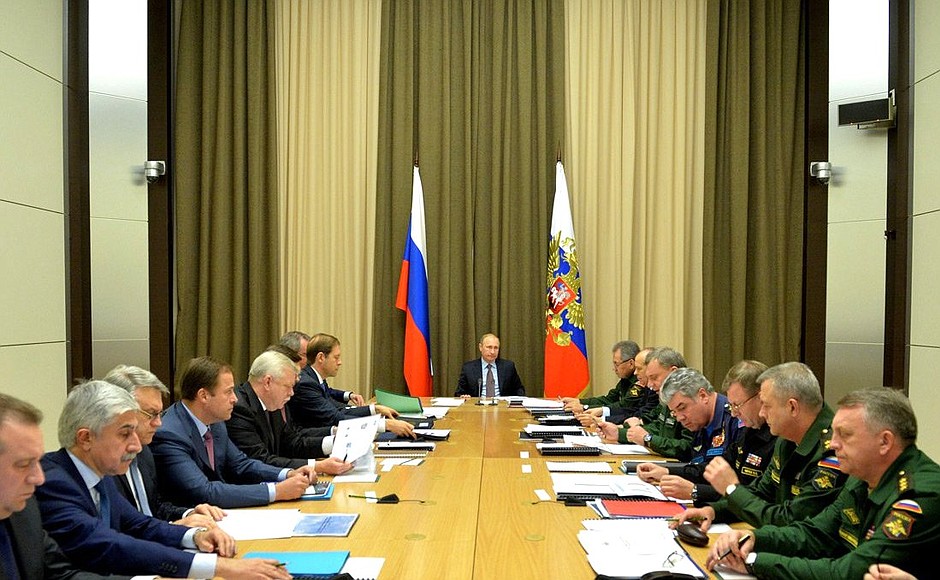
See also
President of Russia Vladimir Putin: Good afternoon, colleagues,
Today we will have another discussion on the development of the country’s Armed Forces. Taking part in our joint work today, as we agreed, are CEOs of the leading defence enterprises.
Together, we will consider – just as we did six months ago also here in Sochi – the preliminary results of fulfilling the 2014 state defence order and will look at the prospects.
I would like to begin by saying that practically all the planned tasks have been implemented. Although there are some shortcomings, and we have to admit this openly, we have already made certain corresponding organisational, technological and technical decisions. It is important to step up the pace we have gained rather than lower it, and to continue the development of the defence enterprises’ production and technological capacities.
I would also like to note that we have identified types of armaments and military and special-purpose equipment that the Army and Navy will be equipped with in the next decade. This will make it possible to cut maintenance and service costs for different modifications of armaments of the same type and to optimise corresponding training.
There are a few things I would like to focus on. First, I would like to remind you that by 2020 the share of modern equipment in the armed forces should be at least 70 percent. This target should undoubtedly be met, regardless of any circumstances. Supply volumes and deadlines should be complied with in full. I would like to stress – and we all know this – that we have everything we need to get this done.
Secondly, defence enterprises should start working on replacing imported units and components of armaments and military equipment. The task is not to simply replace imported produce, which is important in itself. Most importantly, we have to ensure the high quality of new products. A lot of the imported equipment has become obsolete, as we all know. We now have the opportunity to get a head start.
Our produce should be better in terms of quality and price than that made in other countries, while local enterprises should acquire new skills and technologies, including dual-purpose ones. Incidentally, I would like to remind you here that we have allocated significant funds — almost 3 trillion rubles [about $64 billion] — not only for the state defence order, but also for the advanced re-equipment of the defence industry facilities.
As I have said, the nation has allocated significant funds to re-equip the Army and Navy and to modernise the defence industry, and this money should be spent to maximum effect. We need to cut costs, optimise production and ensure strict coordination of delivery deadlines and volumes between related enterprises so as to avoid accumulating ‘work in progress’ produce that does not reach the forces but requires additional maintenance. We also have to make sure defence industry enterprises are not faced with macro-economic things such as inflation and the like. This can all be achieved if we do everything on time.
Let us proceed with our work.
<…>